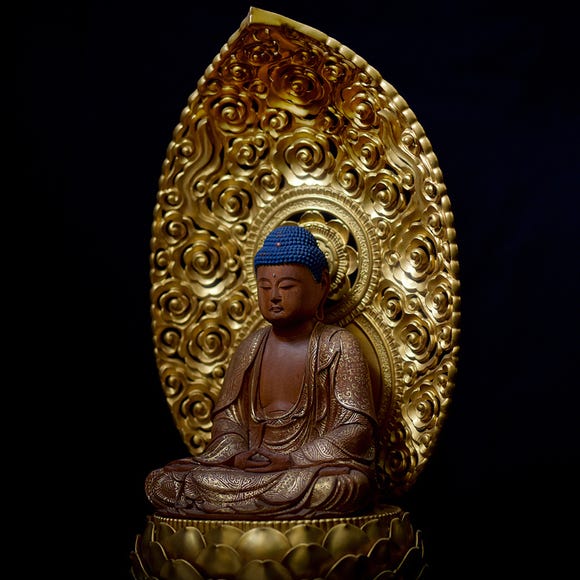
Unlike women's kimonos, where patterns often dictate formality, the formality of men's kimonos is predominantly determined by the fabric. Men's kimonos generally fall into three main styles, each designed for different occasions. This guide explores these classic styles.
Men’s Kimono Rentals In Tokyo

1. Kuromontsuki Haori Hakama

The kuromontsuki haori hakama is the highest-ranking men’s kimono, often reserved for formal events like weddings, coming-of-age ceremonies, and funerals.

This outfit includes a haori (a light coat) and hakama (loose trousers). The haori is typically made from black habutai (a traditional silk fabric), while the hakama is crafted from sendaihira, a refined silk from the Sendai region of Japan.
The five kamon (family crests) on the haori add an extra layer of elegance and formality to this attire, making it Japan’s top men’s formal wear.
2. Iromontsuki Haori Hakama

This slightly less formal style is called the iromontsuki haori hakama. It features a colored habutai haori, paired with a nagagi (a long kimono without trousers) and sendaihira hakama.
Perfect for weddings and age ceremonies (but generally not for funerals), this attire comes in variations with five, three, or one kamon.
The fewer the kamon, the more casual the outfit—so for highly formal events, a five-kamon haori is recommended.


3. Haori Hakama (Standard)

The haori hakama is a versatile choice for slightly less formal occasions. There are two main fabric options for this style: omeshi (a type of silk crepe) and tsumugi (a woven silk). Generally, omeshi is considered more formal than tsumugi. The number of kamon on this outfit is usually three or one, indicating a lower level of formality than the iromontsuki style.
Other Styles

・Nagagi: This is a style that doesn’t include trousers like the hakama. It’s more casual and can be paired with either omeshi or tsumugi fabric. You can mix and match the haori and nagagi based on your preference, creating a unique look that still maintains elegance.
・Kinagashi: On informal occasions, a man can wear a kimono without the haori coat—this is known as kinagashi. This is a simpler, comfortable way to wear a kimono, perfect for anyone who wants to try out the traditional look in a more relaxed setting.
- Kamon: Family crest or emblem
- Haori Hakama: Coat and trousers set
- Omeshi: Silk crepe kimono
- Tsumugi: Woven kimono fabric
Men’s Kimono Rentals in Kyoto
When choosing a men’s kimono, consider the occasion and fabric. With these styles, you can embrace Japanese tradition in a way that feels right for you!
Illustrations courtesy of Manga de Japan
*Prices and options mentioned are subject to change.
*Unless stated otherwise, all prices include tax.
Popular Tours & Activitiess
Recommended places for you
-
Appealing

Rukku and Uohei
Izakaya
Sapporo / Chitose
-

ISHIDAYA Hanare
Yakiniku
Kobe, Sannomiya, Kitano
-

Jukuseiniku-to Namamottsuarera Nikubaru Italian Nikutaria Sannomiya
Izakaya
Kobe, Sannomiya, Kitano
-
Goods

Yoshida Gennojo-Roho Kyoto Buddhist Altars
Gift Shops
Nijo Castle, Kyoto Imperial Palace
-

Kambei Sannomiyahonten
Yakiniku
Kobe, Sannomiya, Kitano
-

Kanzenkoshitsuyakinikutabehodai Gyugyu Paradise Sannomiya
Yakiniku
Kobe, Sannomiya, Kitano
-

[Extended Offer!](12% OFF KKday Coupon) Mt. Fuji Autumn Leaves, Powder Snow & More! 15 Best Tours to Experience Japan in Fall & Winter
-
Ad

(Opening in Jan 2026) 'THE SUMO LIVE RESTAURANT HIRAKUZA GINZA TOKYO!' 5 Exciting Ways to Experience the World of Sumo!
-

New Seibu L00 Series Launching in 2026! What to See Along the Tokyo-Area Golden Route
by: Guest Contributor
-
Ad

Preserving the Beauty of World Heritage Site Shirakawa-go for the Future Through Responsible Travel
-

The Best Japanese Food Representing 2025! 'Dish of the Year®' Annual Award Results Announced
-

Strawberries, Style, and Tokyo’s Coolest Neighborhood: Winter Afternoon Tea in Kichijoji
by: Guest Contributor
-

Kesennuma City Memorial Museum (Ruins of Koyo High School): Telling the Story of the 3/11 Great East Japan Earthquake
-

3 Best Places for Breakfast in Kobe: Live Like an Elegant Kobe Local At These Cafes!
-

5 Best Things to Do in Akiu Onsen: Fun Spa Day Trip Close to Sendai
-

16 Secrets About Mt. Fuji, the Symbol of Japan: Even Japanese People Don’t Know That?!
-

How to Make Okonomiyaki at Home: Osaka Pro Chef Shares His Easy Recipe
by: Guest Contributor
-

Yamagata Prefecture Guide: Destinations, Activities, Travel Advice, Shopping & More
by: Steve Csorgo
- #best sushi japan
- #what to do in odaiba
- #what to bring to japan
- #new years in tokyo
- #best ramen japan
- #what to buy in ameyoko
- #japanese nail trends
- #things to do japan
- #onsen tattoo friendly tokyo
- #daiso
- #best coffee japan
- #best japanese soft drinks
- #best yakiniku japan
- #japanese fashion culture
- #japanese convenience store snacks

















